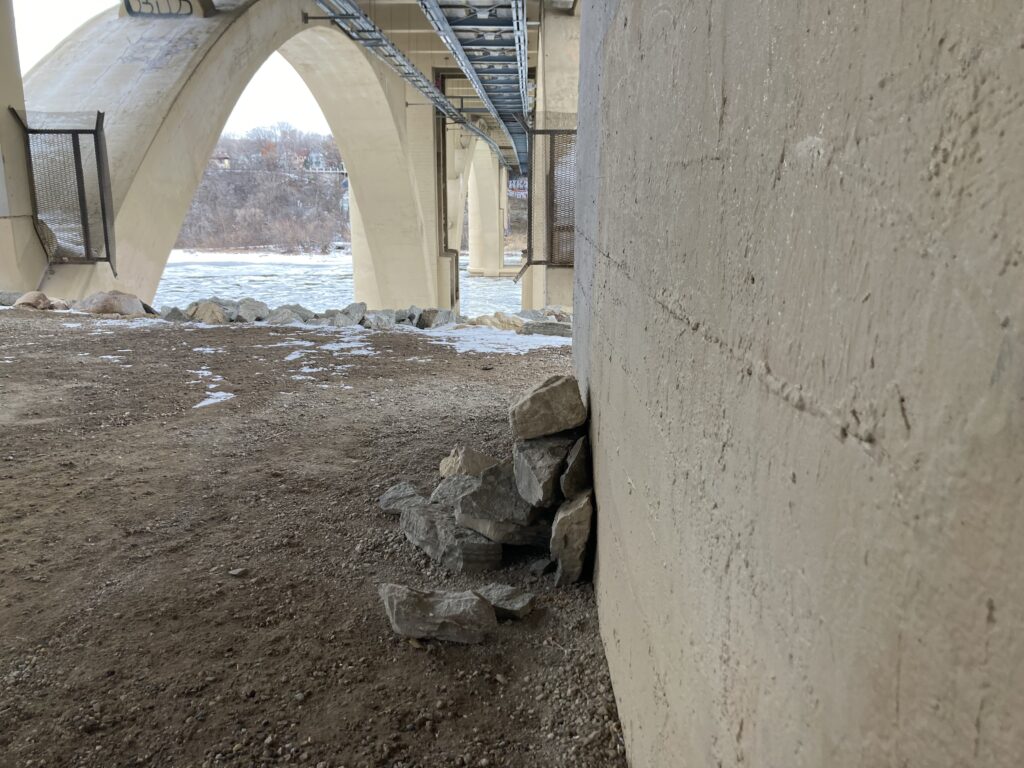2.6 miles
river road, south/north
8 degrees / feels like -1
25% snow-covered
I didn’t feel exceptionally cold, but it felt hard, my legs thick. I stopped at the bench above the “edge of the world” and looked out at the covered river. Someone wrote the name “Davidson” in the snow earlier this week and it’s still there. As I ran, I started chanting in triples:
strawberry/raspberry/blueberry
winter cold/winter snow/winter ice
arctic air/sizzling leaves/crusty snow
10 Things
- BLUE! sky
- crunch crunch crunch
- the river was white and closed except for a few spots that were dark and open
- a (non-fat tire) bike
- a runner’s raspy, hello
- running into the wind, being exhausted by it, wondering how the runners at Boston 2017, when it was cold and windy and raining, managed to run the whole marathon
- bright, blinding sun heading south
- some of the ice on the path was smooth, more of it was jagged and rough
- empty benches
- a truck driving by, then the strong smell of weed
My Heart Has Known Its Winter/ Arna Bontemps
A little while spring will claim its own,
In all the land around for mile on mile
Tender grass will hide the rugged stone.
My still heart will sing a little while.
And men will never think this wilderness
Was barren once when grass is over all,
Hearing laughter they may never guess
My heart has known its winter and carried gall.
gall? I looked this word up and dismissed the definition I knew — gall as bold, impudent, he had the gall (read: nerve) to — because it didn’t make sense to me. Instead, I decided the poet meant
abnormal growths that occur on leaves, twigs, roots, or flowers of many plants. Most galls are caused by irritation and/or stimulation of plant cells due to feeding or egg-laying by insects such as aphids, midges, wasps, or mites. Some galls are the result of infections by bacteria, fungi, or nematodes and are difficult to tell apart from insect-caused gall
Plant Galls
I wasn’t satisfied with Merriam-Webster’s online definitions, so I logged into my library and accessed the OED (very cool that I can do this!) for more definitions. This one sort of works:
Something galling or exasperating; a state of mental soreness or irritation.
this one, too:
A place rubbed bare; an unsound spot, fault or flaw; in early use also a breach. Now only technical.
and this:
A bare spot in a field or coppice (see gall v.1 3). In the southern U.S. a spot where the soil has been washed away or exhausted.
Erosion, exhaustion.
I love the way the word gall with its plant/ field meanings and its human meanings reinforces the association being made between human’s exposed than covered grief and the ground’s exposed winter stone covered in spring’s grass.
I wanted to remember this poem because of the grass and the stone and the forgetting of winter when spring arrives. I don’t totally agree with its use of winter as metaphor for misery.
I like winter. I like breathing in the cold, the sound of snow falling, smelling the air. The silence and the sharp sounds. The view of the river — vast and bare. The subdued colors — pale blues and grays and dark browns. The less crowded trails. The bare-branched silhouettes. Movement slowed, stilled, suspended. Layers. The bright, cold sun.


